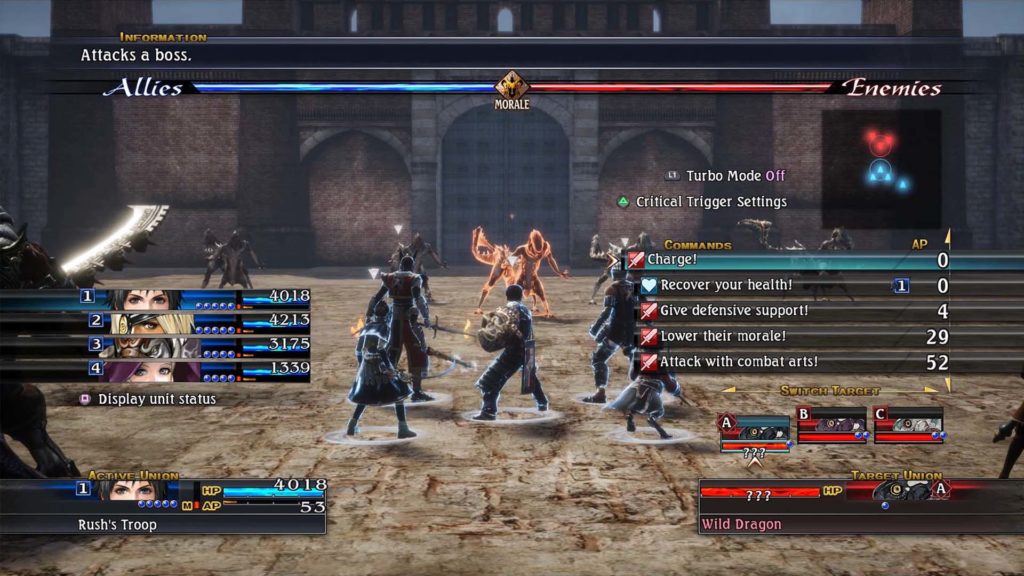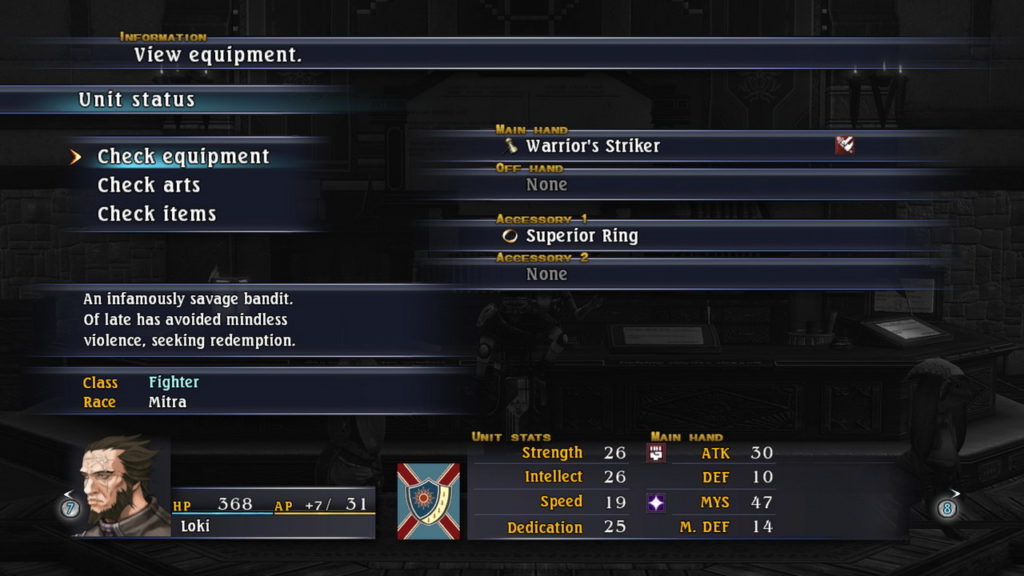There is a lot to say about The Last Remnant. Yeah, I know the game barely hit a meaningful milestone back in its original release and was poorly received by the western media, but that game meant a lot of things. It meant so much Square Enix held it tightly to their chest, kept it alive in the PC, and ultimately re-released the game last year. Why care so much for a game that never won the critics and never made a storm among players? What does this have to deserve a second and even a third chance?
- Reason #1. Despite “failing” as a hit RPG in the seventh generation of consoles, the game was an experimental tool for Square Enix, a place where they could try new waters before deciding to ditch the Unreal Engine and go on with their own thing for the Final Fantasy games that were to come. I can only assume a lot of effort was put into The Last Remnant as a way to both try to make a great game and give knowledge to the development team and the company as a whole. It became an important symbol for the people there perhaps, or maybe it just had cost too much money and it was imperative to earn every coin back.
- Reason #2. The game always had a good heart, that’s hard to contest. The original Xbox 360 version was annoyed by choppy frame rate issues, texture pop-up, many small-but-noticeable technical issues, and most importantly, a completely random and unexplained leveling up system. Yet the game was reworked for its PC version, going through a complete balance overhaul, allowing players to build units with five NPCs, and fixing most of the bugs and randomness of the leveling system. The game became good, but that was too late.
- Reason #3. It is the last of its kind. I mean, Square Enix may have released Kingdom Hearts 3 now, but stop for a while and try to remember what other non-Final Fantasy RPG game the company released in the last decade for high-end consoles. Remember any? No? That’s because there aren’t. Square Enix stopped its attempts to produce new IPs after it invested time and money in the Fabula Nova Crystalis. Every new RPG coming from Square Enix doors since then was developed by a new studio (or one recently bought), not by the major teams in there. The Last Remnant is a dying breed, or maybe even dead breed already. No major japanese developers try their hand in big, ambitious, and risky new IPs in the RPG genre. That job became a thing for minor developers, indies, and side-projects.
So, is it any good today?
Yes, impressively so for some. The Last Remnant is an intriguing, unique JRPG. It offers a wildly different combat system from everything else, it boasts an intriguing setting with the vibe of classical Final Fantasy games, and it is absurdly dense and complex. This is a bold attempt at a decadent genre that perhaps can be better received today than twelve years ago, when it can be better understood and can offer a solid experience free of technical problems.
The tale starts with Rush Sykes, a young man searching for his missing sister and suddenly finding himself in the middle of a political conflict where nobles and rulers try to command the mysterious Conqueror, a guy capable of bending any Remnant to his will. The Remnants are massive artifacts of ridiculous powers, typically granted to the leaders of cities, kings, dukes, and other important figures. Helping Rush in this chaotic setting is David Nassau, a young nobleman trying to make his stand in the higher echelon of society.

A fitting combat system
Rush and David are not about to go around exploring fields and dungeons though, not alone anyway. They are thrown within a world of war, large-scale combats, and massive artifacts. Helping them to survive in this world is an army, one that is built from people you recruit around the world and throughout the story. They are your assets in combat, forming units of up to five people to give you a fighting chance against hordes of monsters, bandits, and some gargantuan dragons and beholders.
Instead of a traditional menu to choose what you will do in a given turn, the combat system in The Last Remnant takes into account the capabilities of every member in the unit, specially the leader, and makes up a list of possible orders you can issue them. For example, if you have people with healing spells and a nearby friendly unit is hurt, the option to issue a “heal others” order will come up. If you have a group full of attackers, you may only see orders in which they perform normal attacks or use up their special ones. This different set of commands are executed by each member of the unit individually, so if you gave the order to heal but a single guy there has no healing capabilities whatsoever, he may stand by or perhaps use a support skill or item.
There is a random factor into that list of orders, and in this random factor lies both the greatness of the combat system and its major troubles. It makes each turn a different thing because the orders change according to the damage your units have taken, how positioned the units are in the battlefield, how much damage the enemy has taken, how high or low morale is, and so on. There are, however, many moments where you are hoping to use one kind of command but it simply doesn’t show up. You cannot control it and that can become absurdly frustrating when you are facing a powerful foe.
Oh, and it is quite a challenge
Although the random orders can be annoying, the challenge from combat comes far more from positive aspects. There is an intriguing dance of movement and waiting in order to avoid being overwhelmed by the enemy numbers, hitting foes without being hit back, and opting for survival or an all-out-attack. There are some very tough enemies, from bosses to a multitude of optional monsters, and dozens of formations and combinations of units for you to try out. Finding what is best for you is a joyful experience, and winning a combat with ease by using the right strategy after failing multiple times is extremely rewarding.
The leveling system however, may betray you. Each time you fight in the game, you earn an invisible experience toward growing in Battle Rank, which, when raised, give small stat bonuses to your party members. Monsters, however, also grow stronger with your Battle Rank, granting them new abilities, increased stats, and more dangerous tactics. In the Xbox 360 version you would grow at a slower pace then enemies unless you consistently avoided combat against low-level foes and only faced one enemy at a time. It was a counter-intuitive and annoying. Fortunately, the PC and Remastered versions are less punitive, giving you higher bonuses and allowing you to explore the game freely without risking becoming too weak. It still has a bit of the sketchy side towards min-maxing the level up, a thing that the game never really explains you at all.

It doesn’t explain a lot of things in fact
Yeah. Battle Rank is given some small explanation, but there is really nothing detailing you about how that work. You have no idea how close you are to the leveling up, you have little information on how to procure materials, and basically every deep and complex system of the game gets just one or two lines of description, leaving everything else hidden in the codes of the game. This may not interfere with those who only want to play through the story casually, but anyone trying to build up a powerful party, tackle optional enemies, and complete side-quests will certainly feel as if the game needed a LOT more of menus, options, explanations, and some kind of bestiary to help with. You need one of thousands of item drops? Good luck finding it. Oh, you never found it? Ha-ha-ha. Try finding one of the monster magazines on your own.
Damn, completing the game without the help of the great gods of The Last Remnant Wikia is an impossible task. Sad thing.
The World Building
If there is a solid strength in The Last Remnant that has hit the mark since the start, it is world-building capabilities. Rush, David, and friends will unveil a lot of things in their search for Irina and when playing the game of politics with other rulers of the region. The background of remnants, the tale of Marshall, the conflicts between cities, there is a lot of stuff presented to us throughout the story and the many side-quests present in the game. Those who enjoy Final Fantasy may very well feel at home here, as the sensation you have while playing the game and watching the cut-scenes is as if you were playing some hidden numbered game in that series.
It helps that the cast is also very interesting too, although little explored. Rush is a lesser kind of protagonist, as is Irina, but David is an interesting guy and his generals are also people you would enjoy to learn more about. Multiple other allies may appear in smaller doses, each being nicely presented for their short screen time and doing a good job at making you feel as if they were part of this intriguing world where massive artifacts seem to control the fate of mortals.
Final Score
 (3.9 / 5)
(3.9 / 5)
The Last Remnant could be a lot more if it just had a bit of tweaking. The Remastered version, following the adjustments of the PC version, brings the game to a playable degree worthy of our time, with a interesting world, decent story and characters, and a lot of things for the hardcore gamer to explore. It still suffers from a mysterious leveling system and the randomness of combat orders can frustrate you at some points, but those issues alone are not enough to bring down the rest. It is also worthy noticing that this game has one of most damn epic soundtracks of gaming history, a stuff memorable enough to stick with you for the rest of your life. Yeah, that good.
Anyway, Final Fantasy fans open to a very different combat system may very well find their hidden Square Enix gem in here. The game has a good heart, this version fixes most of the roughness delivered twelve years ago, and the atmosphere of the tale has many aspects in common with the traditional Final Fantasy universe. It always leave the feeling that it could work with more though, more drama in the scenes, more side-quests exploring some important characters and the world, and more detail and care to the leveling system and material gathering. Despite this, however, it is enough to please an RPG fan.
Summary
-
Production
-
Replay Value/Content
-
Polish
-
Setting
-
Fun
